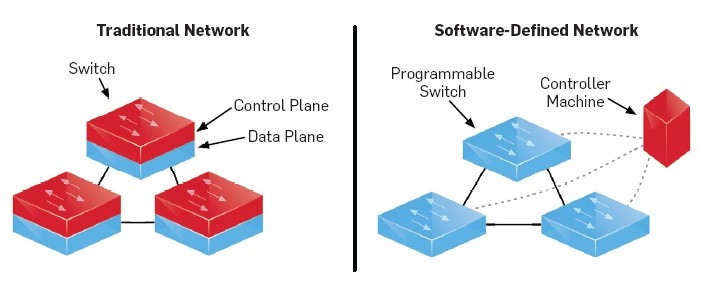Why is it that engineers still mainly using ping, traceroute, and human verification for network validation and testing?
#The Network is an Application, Automate it!
Network Automation is everywhere now!
Network Engineers are gradually becoming "DevOps Engineers" and start using tools like Ansible, Puppet, Chef, and Salt to automate the network infrastructure. There are several python courses, network automation classes focused on Network Engineers where they showcase how you can efficiently automate your network with minimal to no human intervention. Start with basics and do simple task-specific automation like "output from the device". Continue doing this until you reach a level where you automate the components in the network and the system will execute without any human interaction.
#Treat your Network as Cattle, not Pets!
Don't let cows leave the server farm!
IT departments have traditionally treated devices as “pets” – that is, they are lovingly nurtured, nursed back to health when they get sick (stop working) and given affectionate or amusing names. Unlike a pet that requires love, attention and more money than you ever wanted to spend, your infrastructure should be made up of components you can treat like cattle – self-sufficient, easily replaced and manageable by the hundreds or thousands.
#CLI or API? Wait...

API = nimble and flexible. CLI = brittle and difficult to manage.
CLI is not our biggest problem. We happen to be exposed to the CLI on a daily basis due to lack of automation tools. CLIs are hardwired scripts that work well in the short term but don't evolve as gracefully as true integration. APIs provide a more dynamic, fluid integration and binding between software and infrastructure. You can create an object model by implementing RESTful API, JSON or XML, NETCONF API or any other data manipulation protocol.
#Let's go to Cloud!
The Cloud Will Block Out the Sun!
When you update your Facebook status, Checking your bank balance on your phone, chatting and calling using WhatsApp, you’re using cloud computing. You’re in the cloud.
Cloud computing services fall into three major categories: Infrastructure as a service (IaaS), Platform as a service (PaaS), and Software as a service (SaaS). Today, cloud computing is recognized as an invaluable tool for any organization, regardless of its size, market niche, or annual revenue. Cloud computing increases efficiency, helps improve cash flow and offers many more benefits…Flexibility, Disaster recovery, Scalability, Integration, Data security.
#Traditional Network to Software Defined Network (SDN)

With SDN, we’re making the network programmable.
SDN is needed because networks grow too big for manual configuration. SDN is centralized programmable software networks which separate the Control and Data planes allowing for provisioning and changes to be implemented at the same accelerated rate as the servers and storage around them. When an engineer needs to provision additional capacity or make changes to existing rules or regulations about data movement they do not need to connect to multiple devices and make manual changes. Creating a more agile, open network is the fastest way to close the gap between what the customer wants and what the network can provide and that you can achieve with SDN.
#Self-healing Network - Less Troubleshooting

Wouldn’t it be great to have our servers, systems, and networks solve their own problems?
Leading to more stable systems and networks in which System & Network administrators would be free to work on higher priority activities and be more productive. Network self-healing is when network problems are resolved without the need for humans to get involved. Your network automation tools detect and remediate outages, failures, and breaches of all kinds.
Conclusion: The first rule of any technology used in a business is that automation applied to an efficient operation will magnify the efficiency. The second is that automation applied to an inefficient operation will magnify the inefficiency - Bill Gates
Understand the technology before you automate it!













